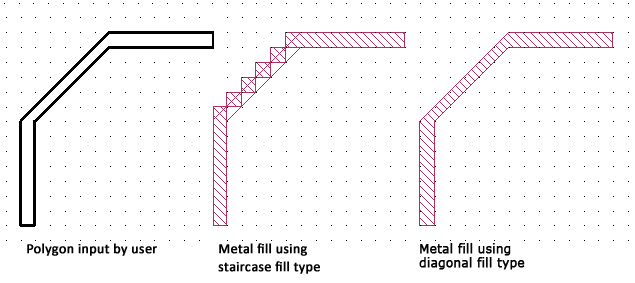Diagonal fill subsectioning is a technique which allows you to more accurately model straight diagonal edges by using triangular subsection as well as rectangular. When modeling a circuit with one to two cell wide traces which contain a diagonal miter corner or a diagonal line, the metal fill using a staircase fill type sometimes causes the actual metal being analyzed to have opens which do not allow current to flow (see the graphic below). In these cases, applying the diagonal fill type to a polygon creates a metal pattern which more accurately models the polygon input by the user.

The first polygon on the left shows the polygon input by the user. The middle polygon shows the metal fill pattern when the staircase fill type is used for the polygon. Note that the metal fill is a series of polygons which only share a corner hence not allowing any current to flow. The third polygon on the right shows the metal fill pattern using the diagonal fill type. As you can see, the metal fill now more closely matches the polygon input by the user and allows the current to flow.
Note that while diagonal fill yields more accurate answers, it increase processing time and should only be used when necessary to correctly model your circuit.